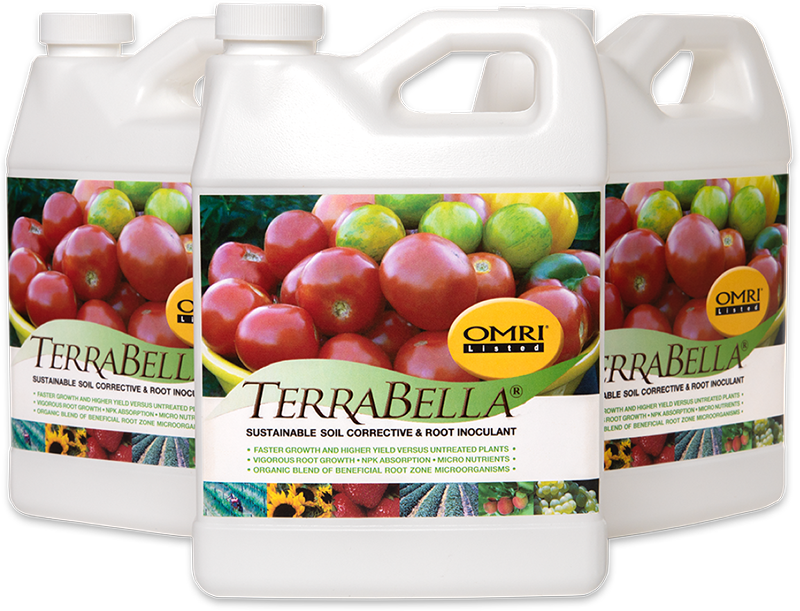
TerraBella - Root Inoculant & Soil Corrective
TerraBella’s unique and highly concentrated blend of soil microbes promotes uptake of nitrogen, phosphorous, potassium and other essential elements in plants. The combination of aerobic and anaerobic microbes works throughout the root zone to increase crop yield, soil fertility, and resistance to disease and pests.
TerraBella Benefits
- Reduces traditional fertilizer inputs by establishing beneficial soil microbial populations in the plant root zone
- Increases biological activity, nitrogen fixation, and nitrogen and phosphorus absorption
- Promotes Higher Yields and Improved Crop Quality
- Promotes NPK and Trace Nutrient Availability to Plants
- Boosts Plant's Immune System and Increases Stress Tolerance
- Promotes Mycorrhizae Growth
TerraBella Case Studies
Bananas
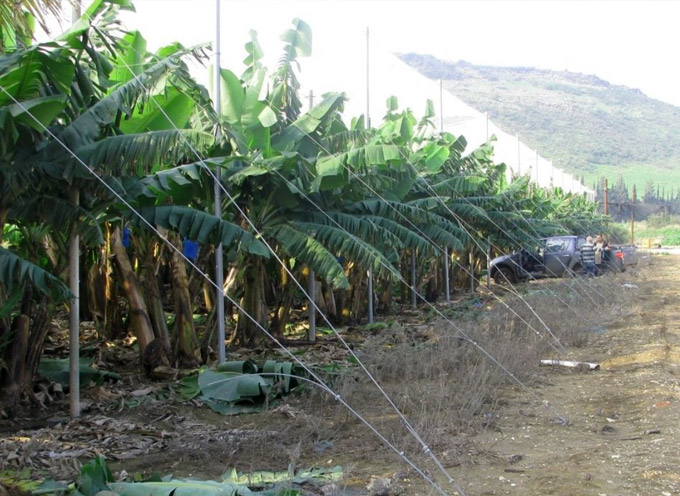
In November 2011, a team from Terrabella® met banana farmers at Kibbutz Ginosar, located on the banks of the Sea of Galilee, and the parties reached agreement on the terms of a test.
Chili Pepper

In Israel, chili peppers treated with TerraBella led to a 28% increase in the amount of fruit and corresponding weight.
Del Monte Melons
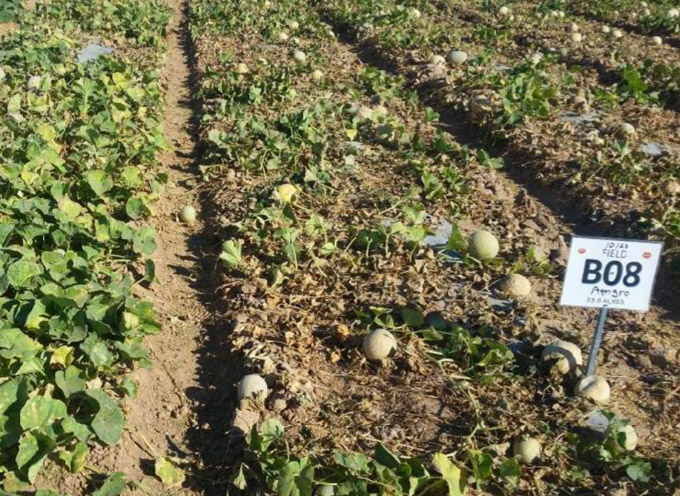
In 2017, this company evaluated several new soil probiotics to determine their effectiveness in treating Crown Blight-infected cantaloupe and Crown Blight-infected honeydew.
Grapevine
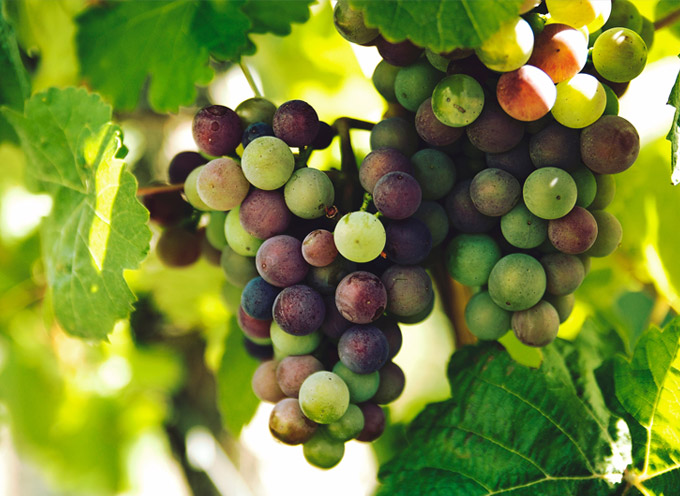
Charles Krug Family Vineyards of Napa used TerraBella to ameliorate Grapevine Leafroll Disease & reach desired Brix content in a section of grapevine.
Green Bean
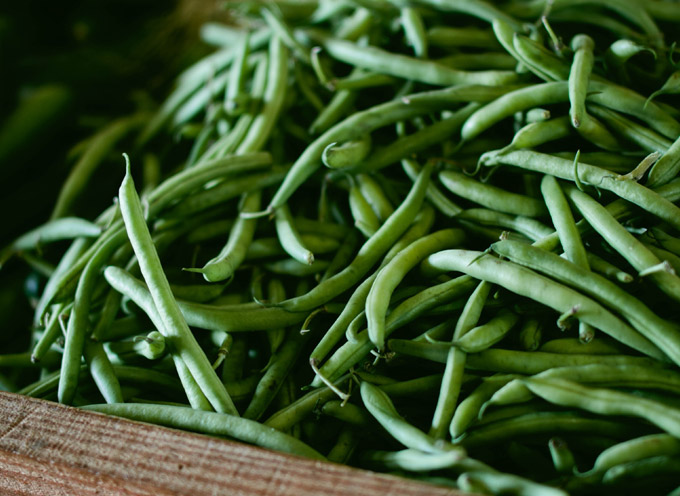
A green bean producer in California was able to achieve a 23% yield increase and 179% return on investment (ROI) by applying TerraBella to the crop.
Hulda Grapes
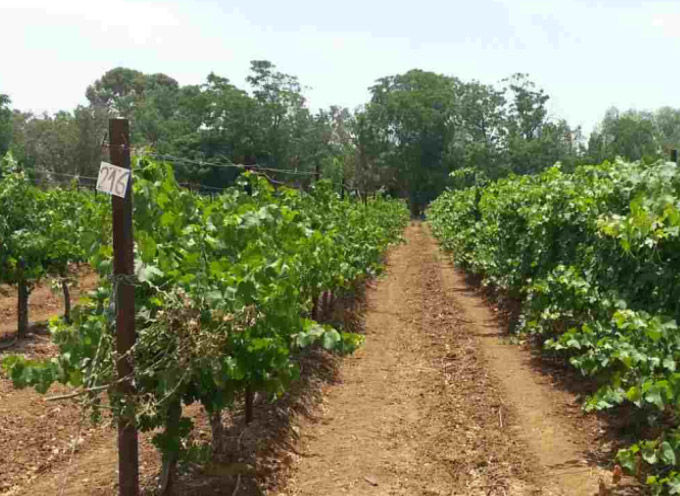
In a grapevine (vineyard) of some 30 hectares, 0,8 hectares were set for a trial to determine the effectiveness of TerraBella® in the grape production.
Lettuce

In Israel, lettuce farmers put TerraBella to the test to see if it can achieve a benchmark, 10% increase in yield.
Lettuce

A follow-on study in Israel showed that TerraBella continued to improve yields of lettuce.
Naturipe Strawberries
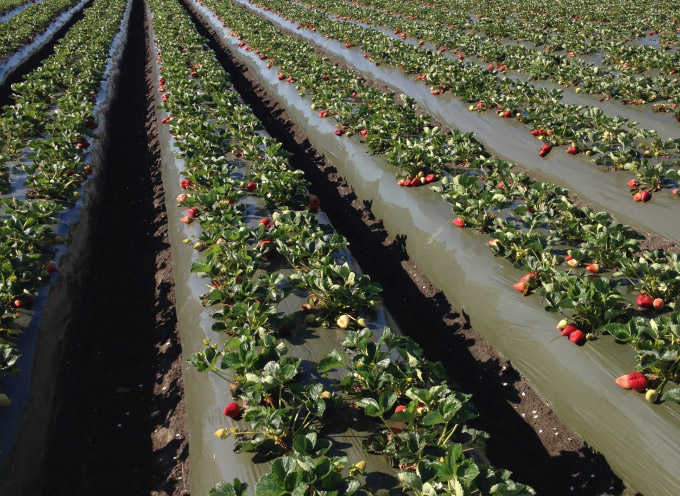
From December 2016 through August 2017 a study was done with Naturipe Farms to test the effect of TerraBella® treatment on strawberry production on 4.7 acres of a farm in the Salinas area of California.
Peaches

In 2014, Mr. Dror Almagor of Bizaron Farm, Israel, agreed to conduct a trial of TerraBella® on the kibbutz’ peach trees.
Pomegranate

Pomegranate farmers in Israel studied Terrabella-treated crops versus a control crops and shared the results.
Red Beet
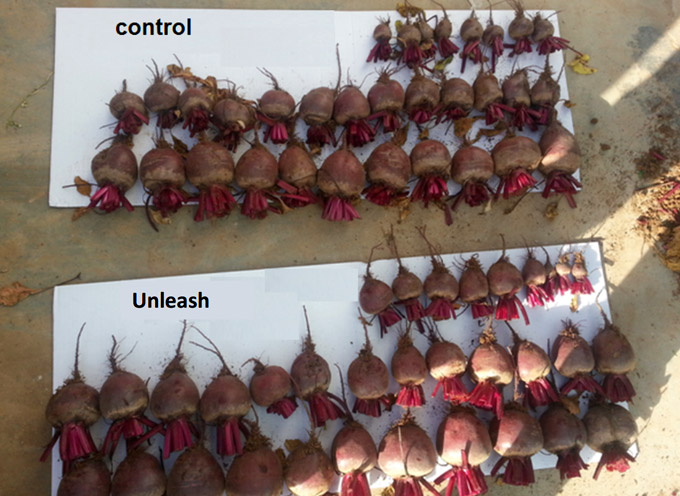
In this report, the influence of TerraBella® in the yields of a commercial farm of red beet is presented.
Sweet Potatoes
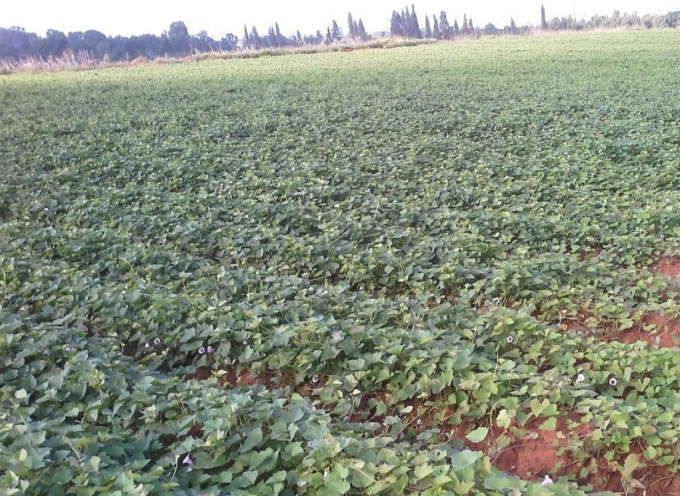
On April, 2012 it was agreed to do a trial with TerraBella® on a four dunam (4,000 square meters) field at Ozer Farm, in the Gan Sh’muel area in Israel.
Sweet Potatoes

A sweet potato farmer in Israel—the world's leader in sweet potato yields--examined how TerraBella increased yield and ROI. The results were remarkable.
Table Grapes

In 2018 a study was done by a major table grape grower to test the effect of TerraBella® treatment and compare it with two other products.
TerraBella Application Instructions
- TerraBella is applied at a rate of 1 liter per acre which is split into 2 applications of 500 mL (or 2 cups).
- Shake well, then mix the 500 mL (or 2 cups) of TerraBella with 35 liters (or 10 gallons) of non-chlorinated water.
- For optimal results, allow mixture to rest for 30 minutes up to 4 hours before applying. If needed mixture can be applied up to 3 days after mixing.
- Proceed with the second application 3 weeks after the first application to complete the treatment.
- For best results, inject gradually to ensure it is evenly spread throughout the acre.
- Continue watering to ensure the bacteria reach the root zone of the plants, typically 2-6 hours more.
TerraBella is sold as a concentrate, and must be mixed in a clean non-metal container with non-chlorinated water to activate. Using a larger amount of TerraBella than recommended will not damage plants. This is a suggested application schedule only, for further information refer to the application guides on www.aquabellaorganics.com or call toll-free 1-888-285-7665.
TerraBella FAQ
1. What is TerraBella?
TerraBella is a plant root inoculant containing a proprietary blend of beneficial plant growth-promoting rhizobacteria (PGPR, with rhizo = root zone).
2. How do I apply TerraBella to my plants?
TerraBella can be used in almost every system available. TerraBella can be directly injected into drip irrigation systems, sprinklers, sprayers or any other system you may use. TerraBella can also be applied using a tank or reservoir system.
3. Will TerraBella work if applied as a foliar spray?
TerraBella can be applied as a foliar spray to help with branch and leaf disease management. To maximize nutrient availability for your plants, we recommend applying TerraBella as close to the plant roots as possible by using drip irrigation and/or applying to the base of the plant.
4. Can I use TerraBella with fertililzer?
TerraBella is safe to use and mix with most fertilizers. In fact, we encourage co-applying TerraBella with fertilizer as it makes nutrients available for uptake to plants. Please call 888-285-7665 for guidance on safely mixing TerraBella with your specific fertilizer.
5. When do I incorporate TerraBella into my growing schedule?
For best results, we recommend applying TerraBella either when you begin fertilization or as early as possible during your plant’s growth cycle. However, TerraBella will still benefit plants when applied later (see next question). Note that for perennial plants, we also recommend application post-harvest.
6. It is part of the way through the growing season. Will TerraBella still help my plants?
Yes. So long as your plants are still taking up nutrients TerraBella will provide benefits by making these nutrients available from soil and fertilizer. If the growing season has already started, we recommend you apply TerraBella as soon as possible.
7. What types of crops/plants can TerraBella be used with?
TerraBella has been used successfully with a wide variety of plant types including (1) herbaceous – such as lettuce, strawberries, broccoli, tomatoes, peppers and many others; (2) trees – such as avocado, fruit and nut trees; (3) vines – such as melons, grapevines and sweet potatoes; (4) shrubs – such as roses.
For annual plants, we recommend applying TerraBella when planting occurs or when fertilization begins. For perennial plants we recommend applying TerraBella when fertilization begins after the plant comes out of dormancy and also applying TerraBella post-harvest if more fertilizer is added at that time.
8. How long does it take to activate TerraBella?
Activation is the process where the microbes in TerraBella are “woken up” from their dormant state by diluting the concentrated TerraBella product in non-chlorinated water. For optimal results, allow mixture to rest for 30 minutes up to 4 hours before applying. If needed mixture can be applied up to 3 days after mixing.
9. What type of container should I use to activate TerraBella?
Activation should be in a clean non-metal container – a plastic bucket or tub is ideal. TerraBella microbes will “stick” to a metal container upon activation such that most of them will be lost before application.
10. Why are there solid clumps floating in concentrated or activated TerraBella?
TerraBella contains a mixture of beneficial microbes. Sometimes these microbes can form clumps that will float in water. These clumps are a normal part of the product and will not disrupt TerraBella activity.
11. Why can’t I use chlorinated water to activate TerraBella? How can I tell if my water has chlorine in it?
Chlorinated water will kill TerraBella’s microbes. If you are on a municipal water system or you treat your well water, then your water is chlorinated. To dechlorinate your water, we suggest adding 1 teaspoon unsulfured molasses to every 5 gallons of water, and leaving it overnight. TerraBella can then be safely activated without microbe loss.
12. Can I use chlorinated water to water my plants?
Yes, chlorinated water can be used to water your plants after TerraBella has been applied.
13. At what temperature range can I activate TerraBella?
TerraBella can be activated at temperatures between 50 – 90˚ F. It should be kept out of direct sunlight to avoid raising the water temperature above 90˚F.
14. At what temperature range does TerraBella work?
TerraBella works at any surface temperature that crops will grow. This is because subsurface soil temperatures (where plant roots are located and where TerraBella microbes are active) have a much more moderate temperature range than the soil surface.
15. At what temperature range can I store TerraBella?
TerraBella should be stored at room temperature out of direct sunlight between 40˚ – 90˚F.
16. What is the best way to incorporate TerraBella into my crop watering routine?
For best results TerraBella’s microbes need to (1) reach the plant’s roots; and (2) colonize the plant roots so they will “digest” nutrients from soil or fertilizer, making them available for uptake. To ensure that TerraBella’s microbes reach the plant roots and don’t stick to the surface soil we recommend watering your plants for 15-20 minutes before application. Once TerraBella has been applied continue to water your plants as normal. For example, if you normally water for several hours, apply TerraBella after watering for 15 minutes, then continue watering as usual. While a subsurface irrigation system is ideal, TerraBella can be applied by above-ground drip or as a foliar spray with equally successful results so long as enough water is applied for TerraBella microbes to reach the root system.
17. Does TerraBella work with herbicides and pesticides?
TerraBella cannot be directly mixed with most herbicides or pesticides during activation. However, TerraBella works fine with most herbicides and pesticides if TerraBella is applied to plants 2 weeks before or after herbicide/pesticide application. For advice on how to use TerraBella with a specific herbicide or pesticide, contact us at 888-285-7665..
18. Does TerraBella help prevent transplant shock?
Yes, TerraBella can help prevent transplant shock by applying TerraBella to the transplant soil. For best results, apply TerraBella to both the transplant soil and to the plant prior to transplantation. The environment the plant roots “see” is in the soil immediately surrounding them, called the Rhizosphere (root zone). The microbes that inhabit the root zone colonize the plant roots and take nutrients from this environment, making them available to the plant. When a plant is transferred to new soil, this rhizosphere has to re-form, a process which delays growth, causing transplant shock. By having TerraBella microbes in the new soil ready to colonize and make nutrients available, the plant can form a new rhizosphere much more rapidly.
19. Is it safe to use TerraBella on plants that are damaged – for example by disease or pests?
Not only is TerraBella safe to apply to damaged plants, in many cases TerraBella helps to bring plants back to a healthy state. TerraBella microbes can also prevent damage from occurring by boosting the immune system and increase stress resistance.
20. How does TerraBella work with Mycorrhizae-based agricultural products to optimize plant growth?
TerraBella greatly improves the ability of mycorrhizae to colonize plant roots. This is because mycorrhizae need nutrients in order to colonize and extend the plant root system and TerraBella microbes ensure sufficient nutrients are available for this to occur.
21. In addition to soil, what other grow media does TerraBella work with?
TerraBella works equally well with soil, soilless, and hydroponic growing mediums. TerraBella’s plant-growth promoting rhizobacteria (PGPR) only require active plant roots to help plants grow. TerraBella works with all soil types tested, except very high pH soil (pH>8).
22. Can I use TerraBella with compost tea?
For compost tea, we generally recommend activating TerraBella separately, then adding to your compost tea mixture just before application.
23. Does TerraBella help prevent root burn?
TerraBella can help prevent root burn. Root burn generally occurs because common nitrogen fertilizers are sold in a “salt” form to keep them in a neutral pH range when hydrated to prevent root damage from pH extremes. Unfortunately, this salt form can also damage roots and cause “root burn”. TerraBella’s microbes will break down the nitrogen salt into a form the plant can use (usually nitrate or ammonia) by separating the nitrogen from the salt residue, thus preventing root burn.
